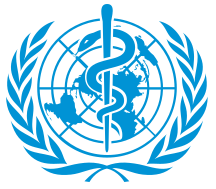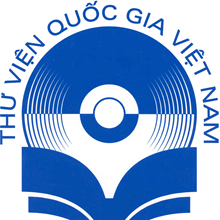
Spatial distribution and accessibility to public sector tertiary care teaching hospitals: case study from Pakistan / Naeem A. Malik;Masood A. Shaikh
Tác giả : Naeem A. Malik;Masood A. Shaikh
Nhà xuất bản : World Health Organization. Regional Office for the Eastern Mediterranean
Năm xuất bản : 2019
Chủ đề : 1. Demography. 2. Geographic Information Systems. 3. Health Services Accessibility. 4. Hospitals, Teaching. 5. Information, Evidence and Research. 6. Mediterranean Region. 7. Pakistan. 8. Public Sector. 9. Spatial Analysis. 10. Tertiary Care Centers. 11. Journal / periodical articles.
Thông tin chi tiết
| Tóm tắt : | Background: Public sector provision of health care services is important for addressing health morbidity and mortali-ty burden for population health in developing countries like Pakistan. Physical accessibility and spatial distribution of healthcare facilities affect their utilization for improving population health.Aims: This study aimed to analyze the spatial distribution of five public sector, tertiary care, teaching, general hospitals in the city of Lahore, Pakistan. Methods: The point locations of all five hospitals were obtained from Google Earth. While the vector road network file was downloaded from the OpenStreetMap website. GIS software ArcGIS 10.5 and the Network Analyst extension were used for processing, analysis and mapping. The Lahore city shapefiles and the hospital point locations were projected to ensure correct spatial distance analysis.Results: The five hospitals are located in the northeastern and east-central parts of Lahore. Most of the Lahore “towns” (administrative subdivisions) are either partially or completely covered by the 12-kilometre buffer as well as the 12-kilo-metre service area around these five selected hospitals. However, either the 12-kilometre buffer or service area did not cover large swaths of Wagha, Nishtar, and Iqbal towns.Conclusions: Availability of geographic and attribute data on road network and population characteristics would facili-tate planning for allocating locations for new health care facilities based on utilitarian principles. Contexte : La prestation de services de santé par le secteur public est importante pour faire face à la charge de morbidité et de mortalité dans les pays en développement tels que le Pakistan. L’accessibilité physique et la répartition spatiale des établissements de santé influent sur leur utilisation pour améliorer la santé de la population.Objectifs : La présente étude visait à analyser la répartition spatiale de cinq hôpitaux publics, de soins tertiaires, universitaires et généraux, de la ville de Lahore au Pakistan. Méthodes : La localisation des cinq hôpitaux a été obtenue au moyen de Google Earth. Par contre, le fichier du réseau routier vectoriel a été téléchargé depuis le site OpenStreetMap. Le logiciel SIG ArcGIS 10.5 et l’extension Network Analyst ont été utilisés pour le traitement, l’analyse et la cartographie. Les fichiers de forme de la ville de Lahore et l’emplacement des points d’hôpital ont été projetés pour assurer une analyse spatiale correcte de la distance.Résultats : Les cinq hôpitaux sont situés dans le nord-est et le centre-est de Lahore. La plupart des circonscriptions de Lahore sont partiellement ou totalement couvertes par la zone tampon de douze kilomètres ainsi que par la zone de service de douze kilomètres autour de ces cinq hôpitaux sélectionnés. Toutefois, ni la zone tampon ni la zone de service ne couvrait de larges surfaces des villes de Wagha, Nishtar et Iqbal.Conclusions : La disponibilité de données géographiques et d’attributs sur le réseau routier et les caractéristiques de la population faciliterait la planification de l’allocation des emplacements des nouveaux établissements de soins de santé selon des principes utilitaires. |
Thông tin dữ liệu nguồn
| Thư viện | Ký hiệu xếp giá | Dữ liệu nguồn |
|---|---|---|
 Tổ chức y tế thế giới
Tổ chức y tế thế giới
|
|
https://iris.who.int/handle/10665/361458 |
 Tài liệu điện tử
Tài liệu điện tử 

 Đại học Công nghệ - ĐHQGHN
Đại học Công nghệ - ĐHQGHN  Đại học Giáo dục - ĐHQGHN
Đại học Giáo dục - ĐHQGHN  Đại học khoa học tự nhiên - ĐHQGHN
Đại học khoa học tự nhiên - ĐHQGHN  Đại học Khoa học Xã hội và Nhân văn - ĐHQGHN
Đại học Khoa học Xã hội và Nhân văn - ĐHQGHN  Đại học Kinh tế - ĐHQGHN
Đại học Kinh tế - ĐHQGHN  Đại học Ngoại ngữ - ĐHQGHN
Đại học Ngoại ngữ - ĐHQGHN  Đại học quốc gia Hà Nội
Đại học quốc gia Hà Nội  Đại học Y - Dược - ĐHQGHN
Đại học Y - Dược - ĐHQGHN  Học Viện Hàng Không Việt Nam
Học Viện Hàng Không Việt Nam  Thư viện đại học Cần Thơ
Thư viện đại học Cần Thơ  Thư viện Huyện Bình Chánh - TVKHTH TP.HCM
Thư viện Huyện Bình Chánh - TVKHTH TP.HCM  Thư viện huyện Bình Minh - TV Vĩnh Long
Thư viện huyện Bình Minh - TV Vĩnh Long  Thư viện huyện Bình Tân - TV Vĩnh Long
Thư viện huyện Bình Tân - TV Vĩnh Long  Thư viện Huyện Cần Giờ - TVKHTH TP.HCM
Thư viện Huyện Cần Giờ - TVKHTH TP.HCM  Thư viện Huyện Củ Chi - TVKHTH TP.HCM
Thư viện Huyện Củ Chi - TVKHTH TP.HCM  Thư viện Huyện Hóc Môn - TVKHTH TP.HCM
Thư viện Huyện Hóc Môn - TVKHTH TP.HCM  Thư viện huyện Long Hồ - TV Vĩnh Long
Thư viện huyện Long Hồ - TV Vĩnh Long  Thư viện huyện Mang Thít - TV Vĩnh Long
Thư viện huyện Mang Thít - TV Vĩnh Long  Thư viện Huyện Nhà Bè - TVKHTH TP.HCM
Thư viện Huyện Nhà Bè - TVKHTH TP.HCM  Thư viện huyện Tam Bình - TV Vĩnh Long
Thư viện huyện Tam Bình - TV Vĩnh Long  Thư viện huyện Trà Ôn - TV Vĩnh Long
Thư viện huyện Trà Ôn - TV Vĩnh Long  Thư viện Khoa học Tổng hợp TP.HCM
Thư viện Khoa học Tổng hợp TP.HCM  Thư viện quận 1 - TVKHTH TP.HCM
Thư viện quận 1 - TVKHTH TP.HCM  Thư viện quận 10 - TVKHTH TP.HCM
Thư viện quận 10 - TVKHTH TP.HCM  Thư viện quận 11 - TVKHTH TP.HCM
Thư viện quận 11 - TVKHTH TP.HCM  Thư viện quận 12 - TVKHTH TP.HCM
Thư viện quận 12 - TVKHTH TP.HCM  Thư viện quận 2 - TVKHTH TP.HCM
Thư viện quận 2 - TVKHTH TP.HCM  Thư viện quận 3 - TVKHTH TP.HCM
Thư viện quận 3 - TVKHTH TP.HCM  Thư viện quận 4 - TVKHTH TP.HCM
Thư viện quận 4 - TVKHTH TP.HCM  Thư viện quận 5 - TVKHTH TP.HCM
Thư viện quận 5 - TVKHTH TP.HCM  Thư viện quận 6 - TVKHTH TP.HCM
Thư viện quận 6 - TVKHTH TP.HCM  Thư viện quận 7 - TVKHTH TP.HCM
Thư viện quận 7 - TVKHTH TP.HCM  Thư viện quận 8 - TVKHTH TP.HCM
Thư viện quận 8 - TVKHTH TP.HCM  Thư viện quận Bình Tân - TVKHTH TP.HCM
Thư viện quận Bình Tân - TVKHTH TP.HCM  Thư viện quận Bình Thạnh - TVKHTH TP.HCM
Thư viện quận Bình Thạnh - TVKHTH TP.HCM  Thư viện quận Gò Vấp - TVKHTH TP.HCM
Thư viện quận Gò Vấp - TVKHTH TP.HCM  Thư viện quận Phú Nhuận - TVKHTH TP.HCM
Thư viện quận Phú Nhuận - TVKHTH TP.HCM  Thư viện quận Tân Bình - TVKHTH TP.HCM
Thư viện quận Tân Bình - TVKHTH TP.HCM  Thư viện quận Tân Phú - TVKHTH TP.HCM
Thư viện quận Tân Phú - TVKHTH TP.HCM  Thư viện Quốc gia Việt Nam
Thư viện Quốc gia Việt Nam  Thư viện thành phố Thủ Đức (cơ sở 1) - TVKHTH TP.HCM
Thư viện thành phố Thủ Đức (cơ sở 1) - TVKHTH TP.HCM  Thư viện thành phố Thủ Đức (cơ sở 2) - TVKHTH TP.HCM
Thư viện thành phố Thủ Đức (cơ sở 2) - TVKHTH TP.HCM  Thư Viện Tỉnh An Giang
Thư Viện Tỉnh An Giang  Thư viện tỉnh Vĩnh Long
Thư viện tỉnh Vĩnh Long  Trung tâm giáo dục quốc phòng và An ninh - ĐHQGHN
Trung tâm giáo dục quốc phòng và An ninh - ĐHQGHN  Trung tâm Hỗ trợ Sinh viên - ĐHQGHN
Trung tâm Hỗ trợ Sinh viên - ĐHQGHN  Trường Đại học Luật - ĐHQGHN
Trường Đại học Luật - ĐHQGHN  Trường Khoa học liên ngành và nghệ thuật - ĐHQGHN
Trường Khoa học liên ngành và nghệ thuật - ĐHQGHN  Trường Quản trị và Kinh doanh - ĐHQGHN
Trường Quản trị và Kinh doanh - ĐHQGHN  Viện Công nghệ Thông tin - ĐHQGHN
Viện Công nghệ Thông tin - ĐHQGHN  Viện Đảm bảo chất lượng giáo dục - ĐHQGHN
Viện Đảm bảo chất lượng giáo dục - ĐHQGHN  Viện Quốc tế Pháp ngữ - ĐHQGHN
Viện Quốc tế Pháp ngữ - ĐHQGHN  Viện Tài nguyên và Môi trường - ĐHQGHN
Viện Tài nguyên và Môi trường - ĐHQGHN  Viện Vi sinh vật và Công nghệ Sinh học - ĐHQGHN
Viện Vi sinh vật và Công nghệ Sinh học - ĐHQGHN  Viện Việt Nam học và Khoa học phát triển - ĐHQGHN
Viện Việt Nam học và Khoa học phát triển - ĐHQGHN